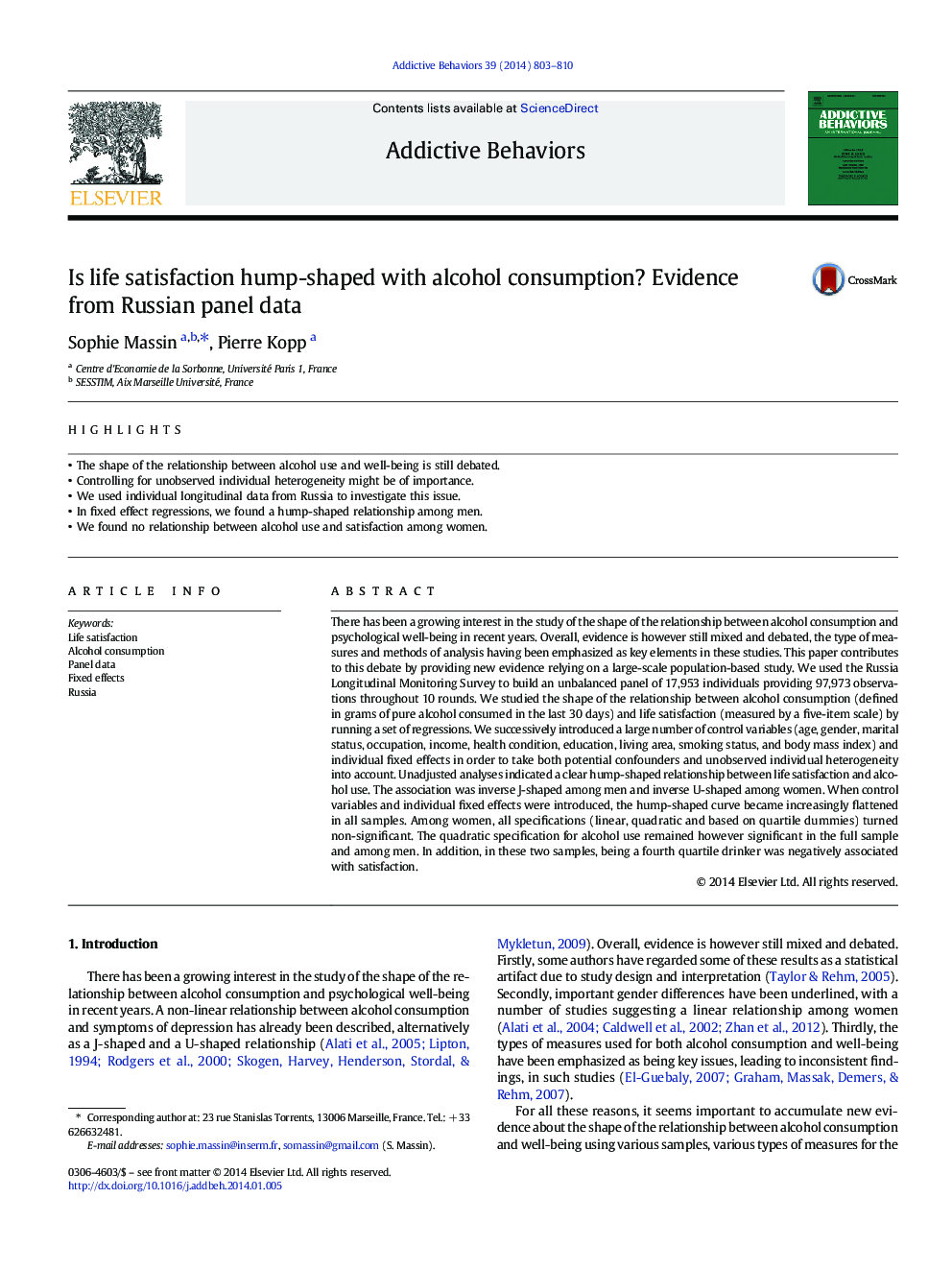| کد مقاله | کد نشریه | سال انتشار | مقاله انگلیسی | نسخه تمام متن |
|---|---|---|---|---|
| 899075 | 915359 | 2014 | 8 صفحه PDF | دانلود رایگان |
• The shape of the relationship between alcohol use and well-being is still debated.
• Controlling for unobserved individual heterogeneity might be of importance.
• We used individual longitudinal data from Russia to investigate this issue.
• In fixed effect regressions, we found a hump-shaped relationship among men.
• We found no relationship between alcohol use and satisfaction among women.
There has been a growing interest in the study of the shape of the relationship between alcohol consumption and psychological well-being in recent years. Overall, evidence is however still mixed and debated, the type of measures and methods of analysis having been emphasized as key elements in these studies. This paper contributes to this debate by providing new evidence relying on a large-scale population-based study. We used the Russia Longitudinal Monitoring Survey to build an unbalanced panel of 17,953 individuals providing 97,973 observations throughout 10 rounds. We studied the shape of the relationship between alcohol consumption (defined in grams of pure alcohol consumed in the last 30 days) and life satisfaction (measured by a five-item scale) by running a set of regressions. We successively introduced a large number of control variables (age, gender, marital status, occupation, income, health condition, education, living area, smoking status, and body mass index) and individual fixed effects in order to take both potential confounders and unobserved individual heterogeneity into account. Unadjusted analyses indicated a clear hump-shaped relationship between life satisfaction and alcohol use. The association was inverse J-shaped among men and inverse U-shaped among women. When control variables and individual fixed effects were introduced, the hump-shaped curve became increasingly flattened in all samples. Among women, all specifications (linear, quadratic and based on quartile dummies) turned non-significant. The quadratic specification for alcohol use remained however significant in the full sample and among men. In addition, in these two samples, being a fourth quartile drinker was negatively associated with satisfaction.
Journal: Addictive Behaviors - Volume 39, Issue 4, April 2014, Pages 803–810
